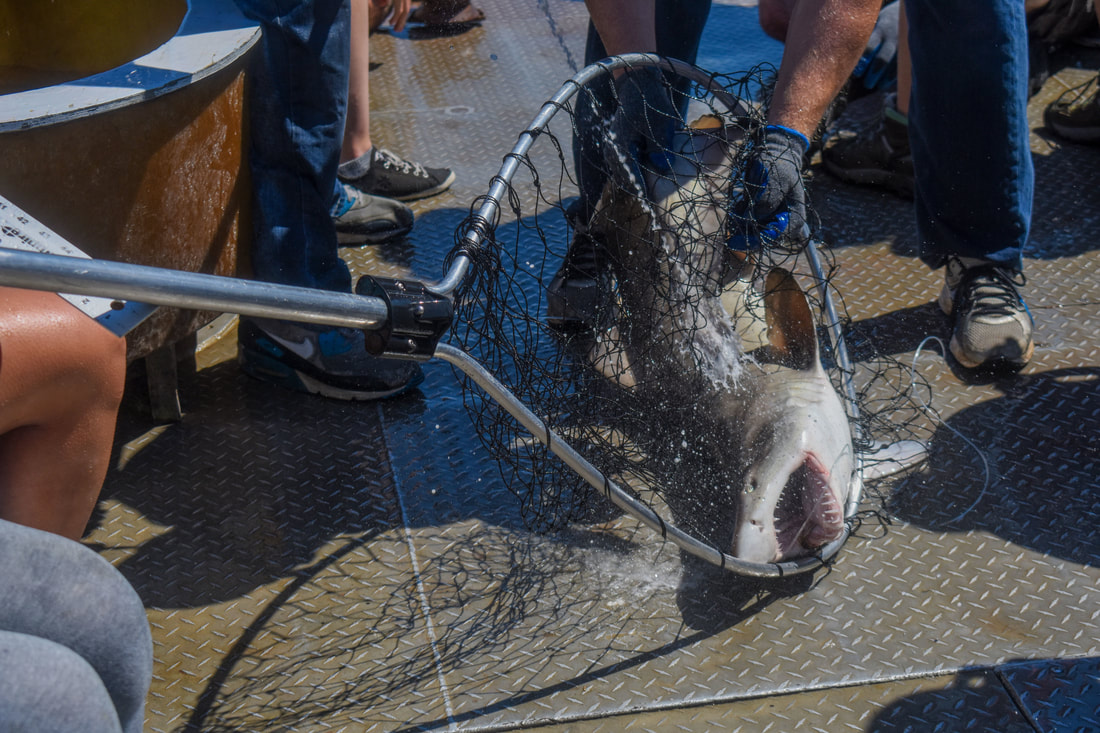|
In honor of Shark Week, we’ve decided to debunk (or confirm) some shark myths! Sink your teeth into 10 common shark tales that are floating around to see if they’re fact or fiction.
Sharks have no bones Fact Sharks skeletons are made up entirely of cartilage. This helps sharks move around quickly, because cartilage is less dense than bone, and helps keep the shark from sinking to the bottom of the ocean. Sharks commonly attack people unprovoked Fiction Sharks’ diets consist of small fish, and humans look a lot bigger than what they’re interested in eating. The chances of being struck by lightning are actually higher than getting bit by a shark. National Geographic reported you have a 1 in 11 million chance of being killed by shark in your life. However, if you do end up getting bit, sharks will typically realize you are not the food they’re interested in and release their grip quickly. Sharks only live in deep ocean water Fiction Sharks can be found in all depths of the water and some can even be found in brackish water like bays or rivers. Some that are common throughout the Chesapeake Bay include dusky sharks, sand tigers, smooth dogfish and hammerheads. Sharks are in the same family as skates and rays Fact Sharks, skates and rays are all members of the Elasmobrandchii family. To be classified into the Elasmobrandchii family, an animal must have a skeleton made up of cartilage and no bones. All sharks need to swim constantly or they’ll drown Fiction This is true for many shark species, but not all of them. Sharks breathe through their gills, and when water passes over the gill’s membranes, blood vessels pull oxygen out of the water allowing the shark to breathe. However, different species use different methods to force water over their gills. Some sharks, such as bullhead sharks, aren’t active swimmers and can breathe while staying still, but most sharks do need to swim to breathe. The biggest shark is the great white Fiction The biggest shark is the whale shark, which can grow up to 60 feet! The basking shark is the second biggest and the great white is third. The largest great white recorded was 20 feet long. Sharks can sense electromagnetic fields Fact Near the tip of the shark’s nose, its rostrum, there are small pores called ampullae of Lorenzini that gives the shark electroreception. These pores pick up electrical impulses, such as movements or heartbeats of other organisms. This is how sharks find their prey even from far away or in dark, murky waters. Sharks have natural camouflage Fact Countershading helps sharks blend in with their surroundings because they naturally have dark colored tops and light bellies. This helps them hide because if you look down on a shark from the top of the water, it’ll blend in with the darkness and if you look up at it from below, the sun shining on the water will match its bright white underside. Sharks have no predators Fiction Humans kill about 100 million sharks every year, largely because of finning. Finning is an illegal practice that involves cutting off a shark’s dorsal fin to use for cultural or commercial reasons. It’s also been said that shark cartilage can help cure cancer, but there isn’t any substantial evidence to support this claim. While in the womb, some sharks will eat their siblings Fact Multiple shark embryos in utero from different fathers can compete for survival. Typically, the largest pup will devour all of its siblings in the womb except for one.
0 Comments
Leave a Reply. |
About
Everything you need to know about CBFS's educational programs, visiting Chincoteague Island, and more! Categories
All
Archives
January 2019
|
CHINCOTEAGUE BAY FIELD STATION | 34001 Mill Dam Road | Wallops Island, VA 23337 | (757) 824-5636 | [email protected]

 RSS Feed
RSS Feed

